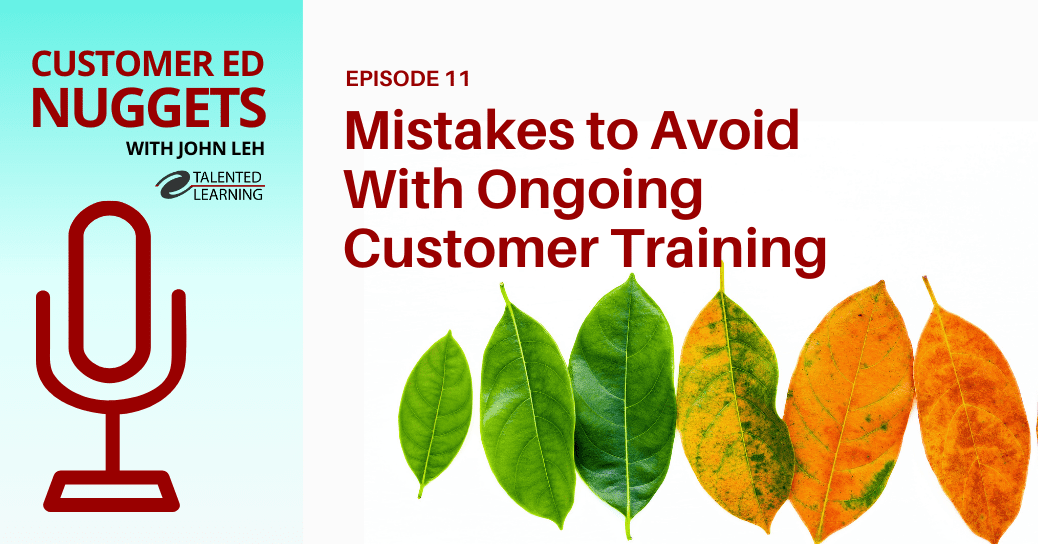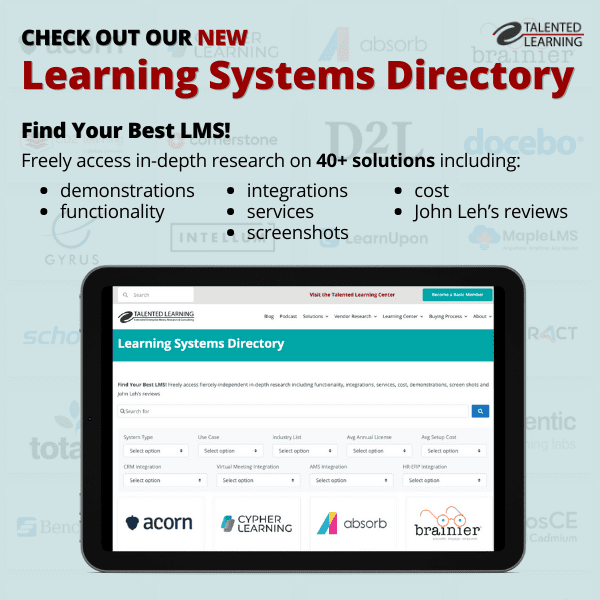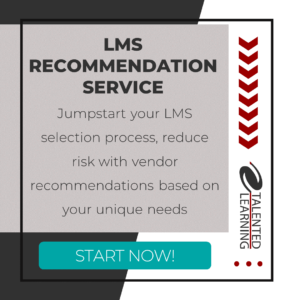
Time flies when you’re moving through change. At least that’s what it feels like in my world as a learning systems analyst and consultant. In only 12 months, I saw dozens of organizations “hit the wall” with their LMS when the pandemic suddenly forced them to go full speed ahead with online learning without comprehensive LMS planning.
During this timeframe, the pace of digital transformation accelerated across the technology sphere – especially in learning. No educational niche has been immune. Corporations, associations, training companies, schools, colleges and even individual subject-matter experts raced to rethink business models and reinvent instructional content at its core.
What’s at Stake
Now, decision-makers continue to operate under intense pressure to modernize their systems so they can create, promote, deliver, measure and expand digital offerings as rapidly as possible. As a result, learning technology ecosystems are facing extraordinary scrutiny.
Of course, LMSs aren’t the only weak link. Tools for marketing automation, customer relationship management, e-commerce, virtual training and more have been found lacking. And each element adds its own layer of complexity to the mix.
Over the past year, I’ve sped through this transformation process with a variety of clients. And although large-scale change is never easy, some organizations are much better equipped than others to ride this massive wave on a tight timeframe.
Is Your LMS Really Future-Ready?
Not surprisingly, now that training transformation is going full-tilt, more people are concerned with what lies beyond this initial phase. Increasingly, I hear questions like these:
- How far forward should we look when considering our next LMS investment?
- How can we respond to immediate learning needs while preparing for whatever the future may hold?
- Is it worth paying the premium for a particular ecosystem component now, if we don’t know when we’ll launch related products or services?
- How can we avoid under-buying or over-buying?
Answering these questions is tricky because the future is a moving target. Plus, this equation has many moving pieces. It’s important to consider relevant internal and external factors, while recognizing that some are beyond your control.
Bottom line: Each organization will answer these questions differently. But everyone needs LMS planning for the future. Just how far into the future? Here’s my advice…
Do you want deep comparative data on the world’s top 40 learning systems vendors? Check out our 2023 Corporate Learning Systems Market Update report – now available for purchase and download! GET DETAILS HERE
LMS Planning: What Timeframe?
Obviously, no one could have anticipated COVID-19. It was an equal-opportunity disruptor. But that shouldn’t stop you from developing a roadmap to guide your steps toward long-term goals.
I recommend using a 3-year rolling time horizon for LMS planning. Also, be sure to build in periodic checkpoints, so you can adjust and expand your plan as the road ahead becomes clearer.
Start by answering these questions:
- What is the current state of your instructional offerings? How do they contribute to your organization’s mission? And what is their perceived value among your users?
- What role does your LMS play today in supporting these offerings?
- What are today’s LMS usage patterns? How complete and reliable is this data?
- What technology limitations are preventing more sales, usage or adoption?
- What should change when you add a new learning system to your technology stack? Why?
- How soon should you see a difference? What is the rate and magnitude of change you want to see?
- Specifically, how would you describe the desired change by the end of each year – 1, 2 and 3? How should usage patterns improve?
- What metrics matter most to you? For example, growth in overall enrollments, courses purchased, certifications completed, repeat usage, revenue or other metrics?
- How will you measure desired changes?
- How long should it take to implement these changes?
- What are your best-case and worst-case scenarios?
Long-Range LMS Planning: Why Bother?
This kind of detailed planning sounds like a big commitment. It is. And unfortunately, it won’t stop unexpected events from happening. But thinking through your goals in detail and plotting scenarios on paper is worth the effort.
Why? Because too often, organizations base technology projects on overly optimistic assumptions.
Time, money and other resources may be lacking, or internal politics may get in the way. Before you know it, you’re behind schedule, over budget and constantly struggling to meet expectations.
But crafting a thoughtful 3-year game plan can prepare you for a persuasive debate about what resources are necessary and why. Also, including periodic progress reviews in your plan can position you as a strategic partner among stakeholders.
This “living plan” can help build confidence and win support for your project, even though your organization must grow into the proposed solution over time.
Ultimately, when the 3-year cycle is complete, your solution will be more likely to fulfill its initial promise. It’s also likely to include other capabilities that weren’t anticipated upfront, but were approved incrementally over time.
In other words, this approach can potentially deliver more bang for your learning infrastructure buck. Demonstrating this kind of value-add builds deeper trust with decision-makers and can lead them to extend your plan beyond its original 3-year scope.
LMS Planning Updates: When and Where to Focus
It’s important not to treat your plan as a “one-and-done” exercise. Reviewing and refreshing your roadmap annually will help you anticipate and mitigate surprises.
Here are some questions to investigate and discuss with others each year, as you consider possible adjustments:
- Given the actual level of implementation progress, do you still consider your goals for the upcoming year to be realistic?
- What modifications or trade-offs make sense?
- With existing resources, is it feasible to build out and support more feature sets, such as social capabilities or gamification? How could these fit into your timeline?
- How well are learners adapting to system changes? Would change management efforts help learners or your organization adjust more effectively?
- How much more change can your audience and your organization absorb? Do you see evidence of confusion, user fatigue, admin frustration or other issues that tell you to slow your pace?
Do you want deep comparative data on the world’s top 40 learning systems vendors? Check out our 2023 Corporate Learning Systems Market Update report – now available for purchase and download! GET DETAILS HERE
The Upside: It Will Get Easier
If you’re looking for extra motivation to kick-start your LMS planning efforts, I have terrific news. Switching components within a learning ecosystem is getting easier all the time.
Many powerful pre-built integrations are available. And more learning systems are being developed with integration as a core design principle.
Because this integration mindset is increasingly popular, you’ll have more choice and more control in the coming years. You can expect that working with APIs, connectors, plug-ins and microservices will be a viable way to customize, enhance and upgrade your learning technology stack, incrementally.
As a result, “vendor lock-in” mentality will become a relic of the past. And ecosystems will increasingly be composed of interchangeable, standards-based modules. So that means you’ll save time and energy across-the-board, as you build, maintain, enhance and expand your learning infrastructure.
Conclusion
Change can be annoying. Sometimes it is also complex and costly – especially when learning systems are involved. But, as many organizations discovered during the past year, transforming a learning ecosystem is certainly achievable. And a plan will lead you where you want to go faster, with fewer missteps.
Start by documenting key business issues, goals and priorities over a 3-year span. Then commit to an annual strategic “checkup,” so you can adjust accordingly and keep your learning tech stack on track.
This may seem tedious. But trust me, it’s a smart move. Your organization’s leaders expect this level of effort before they sign-off on any digital transformation initiative. And this approach will reduce the risk of making poor decisions in today’s fluid, uncertain environment.
So plan for the future, and work the plan. But be sure that your strategy is flexible, so you can adjust on an ongoing basis. Because change is inevitable. And it really is the only constant.
Thanks for reading!
Need Help Finding the Best LMS for Your Needs?
Fill out the form below to request a complimentary consultation call with John Leh:
Share This Post
Related Posts
The Future of Customer Education: Customer Ed Nugget 16
Customer education is rapidly evolving as organizations embrace new strategies and tech. What does this mean for the future of customer education? See what experts say on this Customer Ed Nuggets episode
Education Strategy Mistakes to Avoid: Customer Ed Nugget 15
What does it take to deliver a successful customer education program? It starts with a solid education strategy. Learn how to avoid common pitfalls on this Customer Ed Nuggets episode
Which LMS is Best for You? New Shortlisting Tool for 2024
How can you find the best learning system for your business? Our LMS shortlisting tool can help. Learn about the 2024 RightFit Solution Grid. Free, reliable guidance based on our independent research
How to Build a Learning-Based Business: Executive Q&A Notes
Building and selling online courses may seem easy, but building a profitable learning-based business is far more complex. Find out what successful leaders say about running this kind of business
The Rewards of Community Building: Customer Ed Nugget 14
What role does community play in your customer relationships? Find out why community building is such a powerful force in customer education on this Customer Ed Nuggets episode
Benefits of Training Content Syndication: Customer Ed Nugget 13
If you educate customers online, why should you consider content syndication? Discover 10 compelling business benefits in this Customer Ed Nuggets episode
Top Marketing Skills to Master: Customer Ed Nugget 12
Successful customer education programs depend on professionals with expertise in multiple disciplines. Which marketing skills lead to the best results?
How to Measure and Improve Partner Training ROI
An educated channel is a successful channel. But how do you know if your educational programs are effective? Learn from an expert how to evaluate partner training ROI
Mistakes in Ongoing Customer Training: Customer Ed Nugget 11
Customer education doesn't stop with onboarding. It pays to invest in ongoing customer training. Learn which mistakes to avoid in this Customer Ed Nuggets episode















FOLLOW US ON SOCIAL